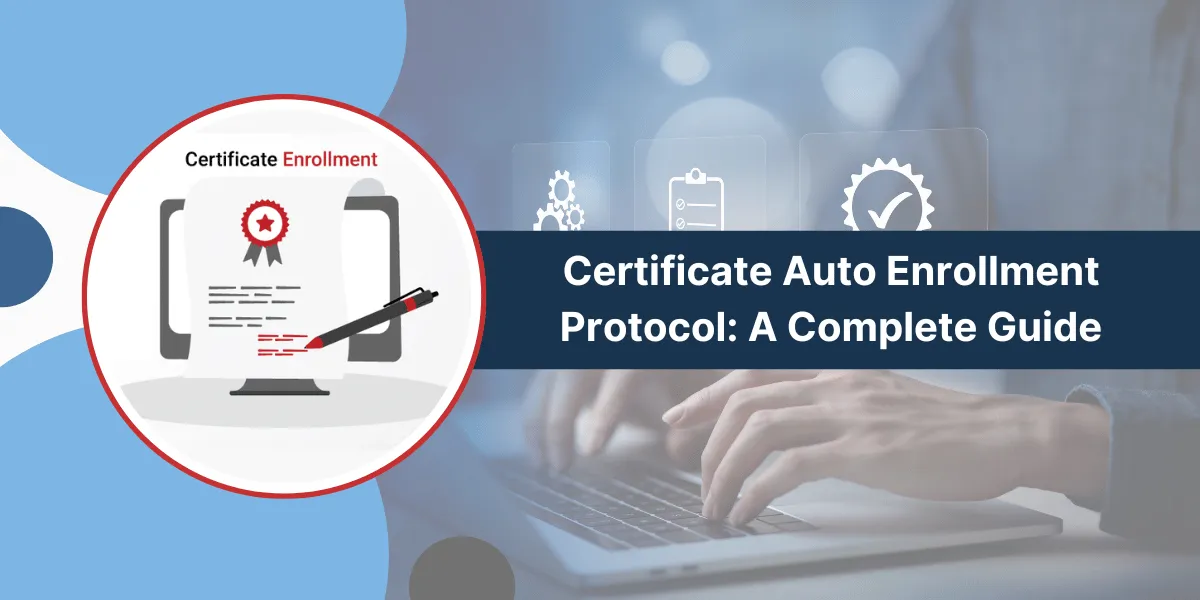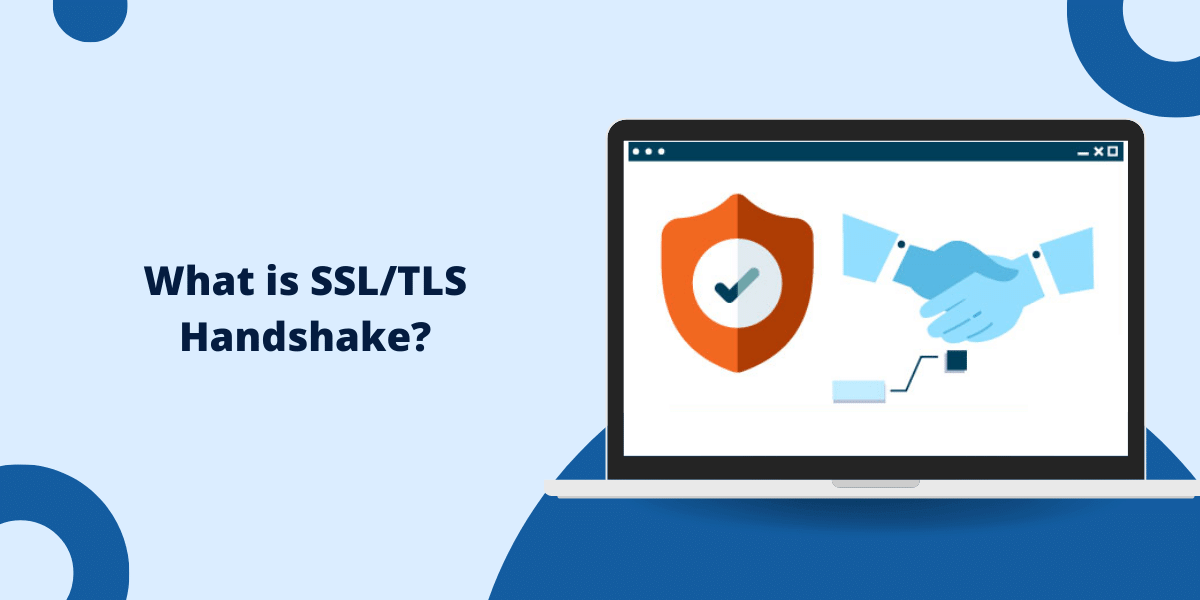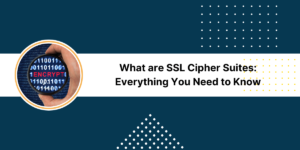What Does Certificate Auto Enrollment Mean?
Certificate auto enrollment is the automated process of issuing and renewing digital certificates on devices without manual intervention. It enables seamless deployment and renewal of certificates across an organization’s devices and users.
Some key benefits of certificate auto enrollment include improved security through timely certificate renewals, reduced IT overhead by eliminating manual tasks, and enhanced user productivity by ensuring certificates are valid and trusted.
This comprehensive guide will provide an in-depth look at certificate auto enrollment protocols, best practices for implementation, and tips for troubleshooting issues.
Key Takeaways
- Certificate auto enrollment works by leveraging protocols like SCEP, EST, and ACME to automate certificate issuance and renewal.
- A PKI server with auto enrollment capabilities, along with a supported client, is required for implementation.
- Auto enrollment can issue certificates for authentication, encryption, code signing, and other uses across devices, users, and applications.
- Proper planning of policies, certificate templates, and key lengths ensures a smooth auto enrollment deployment.
- Monitoring with robust logging helps identify and troubleshoot any issues with auto enrollment workflows.
An Overview of Certificate Auto Enrollment
Digital certificates establish trust between two parties and enable secure communication through encryption. They are a crucial component of IT infrastructure security.
Manual certificate distribution, renewal, and management can be extremely tedious and error-prone. To streamline the process, protocols have been developed that allow certificates to be automatically enrolled.
What is Certificate Auto Enrollment?
Certificate auto enrollment automatically issues or renews digital certificates on endpoints without requiring any manual intervention by users or IT staff.
It works by leveraging standard protocols to request and install new certificates when required based on policies set up on the issuing certificate authority (CA) server.
Devices and users can seamlessly receive updated certificates as existing ones expire. It reduces overhead for IT teams since they don’t have to manually deploy certificates repeatedly.
Benefits of Certificate Auto Enrollment
Some key benefits of implementing certificate auto enrollment include:
- Improved Security: Automatically renewing certificates on time ensures endpoints always have valid and trusted certificates, removing lapses in security.
- Lower Costs: Reduces the person-hours required for routine certificate management tasks. Also minimizes downtime from expiring certificates.
- Better Compliance: Auditors view auto enrollment positively as it ensures certificates are valid and policies are followed.
- Increased Scalability: Auto enrollment allows securely enabling certificates on thousands of endpoints from a central CA server.
- Enhanced User Experience: Users are unaffected by certificate renewals since they happen silently without disruption.
- Flexibility: Granular policy configuration allows issuing tailored certificates for different use cases across an organization.
How Certificate Auto Enrollment Works
Certificate auto enrollment relies on the following components working together:
- Certificate Authority: This is the server, either on-premises or cloud-hosted, that can be configured to support auto enrollment. It should allow templating and key archival.
- Client Software: The endpoint device must have software capable of communication via auto enrollment protocols to request certificates.
- Protocols: Standard protocols like SCEP, EST, or ACME are used for automated communication between the CA server and clients.
- Policies: Configure policies on the CA server to determine how and when certificates are issued via auto enrollment.
The overall workflow consists of the following steps:
- CA administrator configures policies, templates, and communication settings on the CA server to enable auto enrollment.
- Endpoints are provisioned with a trusted root CA certificate along with client software.
- Clients automatically request new certificates from the CA as needed based on policies.
- CA server validates the request and issues certificates to the authenticated clients.
- Certificates are seamlessly installed on endpoints for trusted identity and encryption.
- The process repeats itself automatically for certificate renewal upon expiration.
What are Certificate Auto Enrollment Protocols
Several industry standard protocols provide the core functionality for certificate auto enrollment:
- SCEP: Simple Certificate Enrollment Protocol
- EST: Enrollment over Secure Transport
- ACME: Automated Certificate Management Environment
SCEP: Simple Certificate Enrollment Protocol
SCEP is one of the most commonly used protocols for auto-enrollment, and it is supported natively by Microsoft and other CAs.
It provides certificate issuing and management capabilities using straightforward processes for message exchange between the CA server and clients.
SCEP utilizes standard PKI mechanisms like CSR and CRL. It can enable both initial enrollment and renewal of certificates based on predefined policies on the CA.
It’s best suited for automated delivery of certificates to domain-joined Windows computers.
EST: Enrollment over Secure Transport
EST provides certificate management capabilities over HTTPS. It extends the basic SCEP protocol with added features like full certificate revocation, key archival, and password-based authentication.
It can leverage existing HTTPS infrastructure and doesn’t require a dedicated client. EST supports both issuing new certificates and automatically renewing existing certificates.
API-based integration and flexibility make EST suitable for IoT devices. The standard is defined in RFC 7030.
ACME: Automated Certificate Management Environment
ACME is a relatively new protocol standardized in RFC 8555 for automated validation and issuance of certificates. It was designed to secure websites and applications.
ACME relies on the Certification Authority Authorization (CAA) DNS resource record to verify domain control for issuing trusted SSL/TLS certificates.
Let’s Encrypt is a popular free, automated, and open CA that provides certificates via ACME. It’s widely used to enable HTTPS on websites.
ACME also supports the auto-renewal of certificates. The simple JSON/HTTPS-based flow makes integration easier.
Things to Know Before Choosing Auto Enrollment Protocol
Consider the following factors when selecting an auto enrollment protocol for your environment:
- Native platform or product support
- Types of certificates required
- Supported clients and endpoints
- Flexibility for future needs
- Complexity of implementation
SCEP is a good default option for Windows environments, whereas EST provides added benefits for renewal and archival. ACME suits web-based certificates.
How to Create a Plan for Auto Enrollment CA Deployment
Careful planning is required to deploy certificate auto enrollment successfully. Important considerations include:
PKI Server Selection
An enterprise-grade CA server is required that can integrate with auto-enrollment protocols. Options include Microsoft Active Directory Certificate Services, EJBCA, OpenSSL, etc.
For cloud deployments, managed PKI services like AWS Certificate Manager, Azure Key Vault, etc., can be evaluated.
Certificate Usage
The different types of certificates to be issued via auto-enrollment should be planned, like server authentication, client authentication, code signing, etc.
Templates and Policies
The CA needs certificate templates defining key usages, algorithms, and extensions. Policies determine how requests are validated and approved.
Key Archival
Private keys of issued certificates can be archived on the CA for recovery if the endpoint is lost or compromised.
Distribution and Enrollment
The process for deploying root and issuing CA certificates, along with client software on endpoints for auto enrollment, should be designed.
Access Control
Users and devices should be granted only appropriate access to request certificates based on their role.
Logging and Monitoring
Robust logging and monitoring should be implemented to detect any issues with auto enrollment workflows.
Best Practices for Auto Enrollment
Follow these best practices when implementing certificate auto enrollment for optimal security and performance:
- Use AES 256-bit or stronger keys for encryption strength and future-proofing.
- Enable Multi-Factor Authentication for key administrative actions on the CA server.
- Segment certificate templates and policies based on use cases like server vs client authentication.
- Set validity period based on sensitivity, like 1 year for web servers and 2 years for internal infrastructure.
- Renew certificates automatically before expiry to prevent disruptions.
- Archive keys and securely backup CA server data for redundancy.
- Distribute root and intermediate CA certificates out-of-band to endpoints.
- Only allow authorized systems and accounts to request certificates.
- Configure OCSP and CRL distribution points for certificate status verification.
- Monitor key health indicators like failed requests, expirations, revocations, etc.
Troubleshooting Certificate Auto Enrollment
Despite best efforts, issues can occasionally arise with certificate auto-enrollment workflows.
Some steps for troubleshooting include:
Reviewing Logs
Enable verbose logging on the CA and clients. Analyze them to identify errors such as failed authentication, CRL checks, etc.
Confirming CA Health
Check for any CA outages, replication issues, or policy changes. Confirm OCSP and CRL infrastructure is functional.
Validating Endpoints
Verify client software, configurations, and connectivity. Check time sync and domain membership status of endpoints.
Inspecting Certificates
Examine existing certificates on clients for anomalies related to validity, fields, key usage, etc., and compare with templates.
Retrying Requests
Force renewal requests manually from clients to see if auto enrollment works independently. This isolates issues on the server-side.
Policy Troubleshooting
Create temporary test policies and templates to eliminate problems with the original ones. Use these temporary policies to test issuing certificates manually.
Network Analysis
Use packet captures on the CA and clients during failed requests to analyze network issues. Verify traffic is allowed on required ports/protocols.
Testing Connectivity
For HTTPS-based protocols like EST, test connectivity over those specific ports. Confirm SSL/TLS versions and cipher suites match on server and client.
Developer Resources
For custom clients and integrations, refer to developer documentation and tools provided by CA vendors for debugging. Use test CA instances first.
Vendor Support
Engage vendor/expert support if needed to troubleshoot and resolve complex auto enrollment problems that persist.
By methodically following these troubleshooting techniques, the root cause of most auto enrollment issues can be identified and fixed.
Final Thoughts
In summary, Certificate Auto Enrollment Protocols like SCEP, EST, and ACME provide immense value for organizations by automating the issuance and renewal of digital certificates. Implementing these protocols, along with a supporting PKI infrastructure, removes the manual overhead of certificate management.
Certificate Auto Enrollment Protocols ensure endpoints have valid certificates continuously by establishing automated communication between the CA server and clients. With the best practices around planning, policies, security, and monitoring outlined in this guide, organizations can leverage Certificate Auto Enrollment Protocols to enhance security and productivity through seamless certificate lifecycle management.
Frequently Asked Questions (FAQ)
What protocols support certificate auto enrollment?
SCEP, EST, and ACME are the main protocols that allow automated certificate enrollment. Microsoft also has proprietary auto-enrollment support.
Do endpoints need any agent or client for auto enrollment?
Yes, the endpoint device must have appropriate client software capable of communicating with the CA server via standard protocols.
Is auto enrollment suitable for externally facing certificates?
Externally trusted SSL/TLS certificates should go through strict validation rather than automated issuance to maintain trust.
How are certificates renewed automatically before expiry?
The client attempts to renew certificates starting from a configured period before the expiration date, such as 30 days before expiry.
Can certificates be revoked automatically if a device is compromised?
Yes, automated revocation is feasible based on events like unusual logins or antimalware alerts to revoke certificates selectively.
How can the security of private keys be ensured during auto enrollment?
Keys should never be transmitted. Private keys can be generated on the client device itself or archived securely on the CA.

Priya Mervana
 Verified Web Security Experts
Verified Web Security Experts
Priya Mervana is working at SSLInsights.com as a web security expert with over 10 years of experience writing about encryption, SSL certificates, and online privacy. She aims to make complex security topics easily understandable for everyday internet users.



